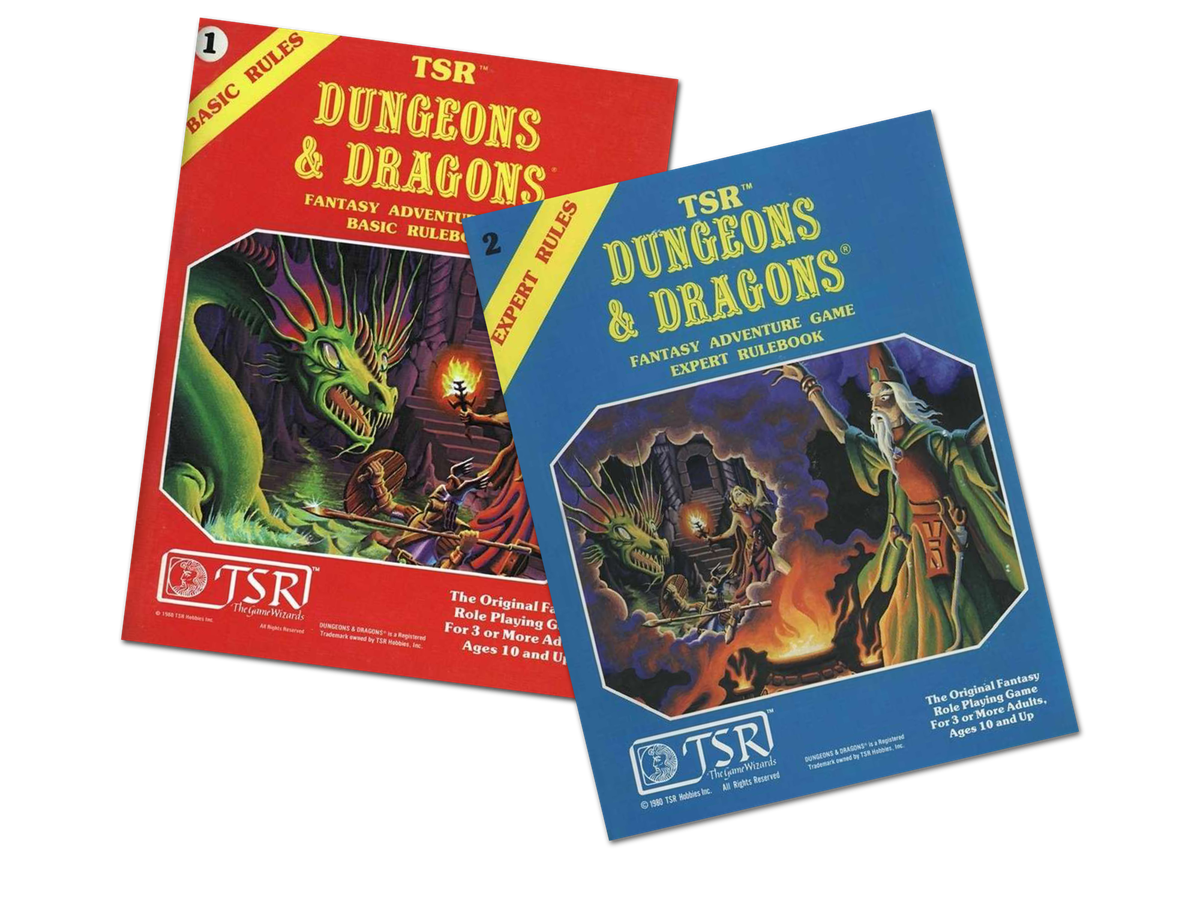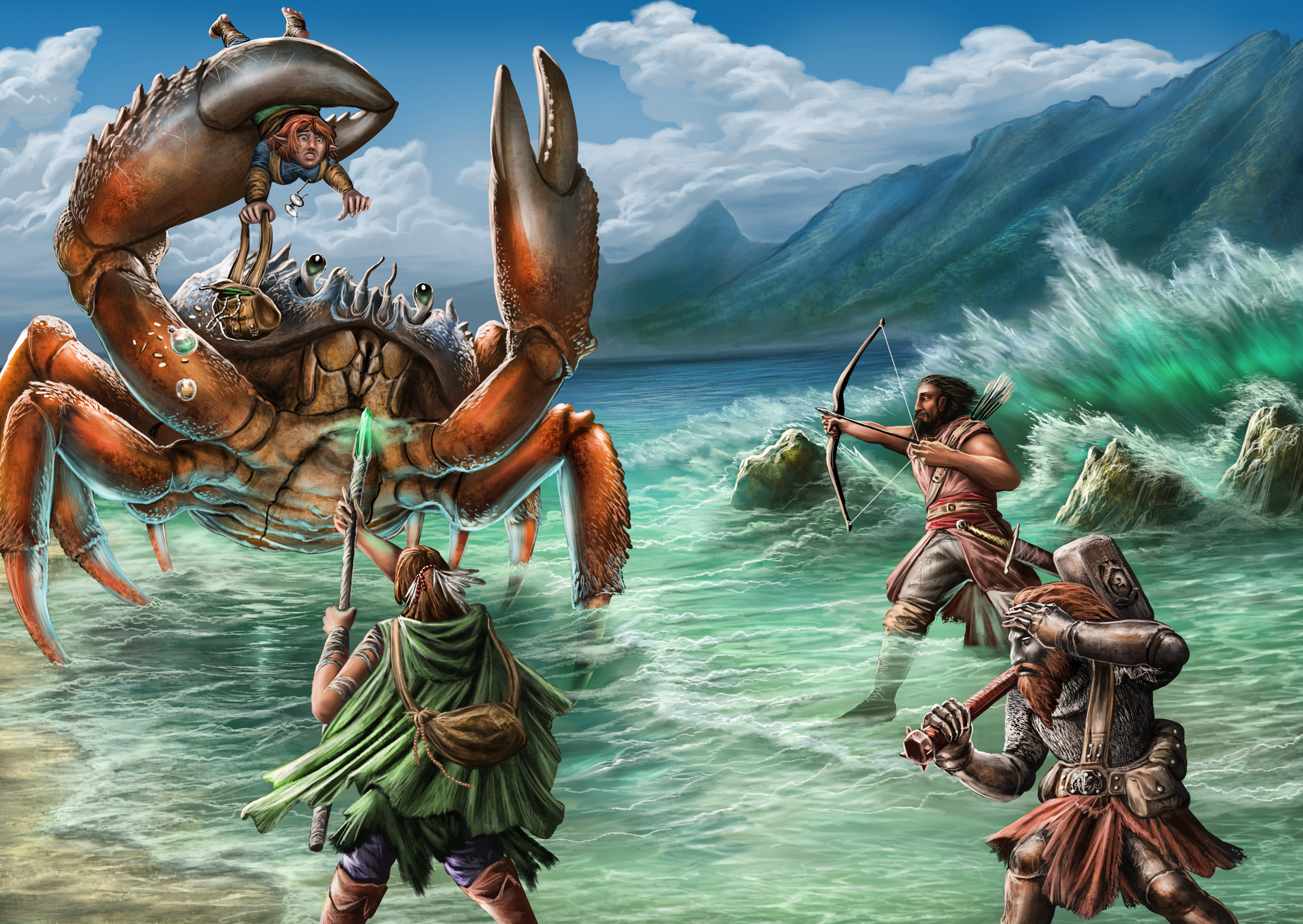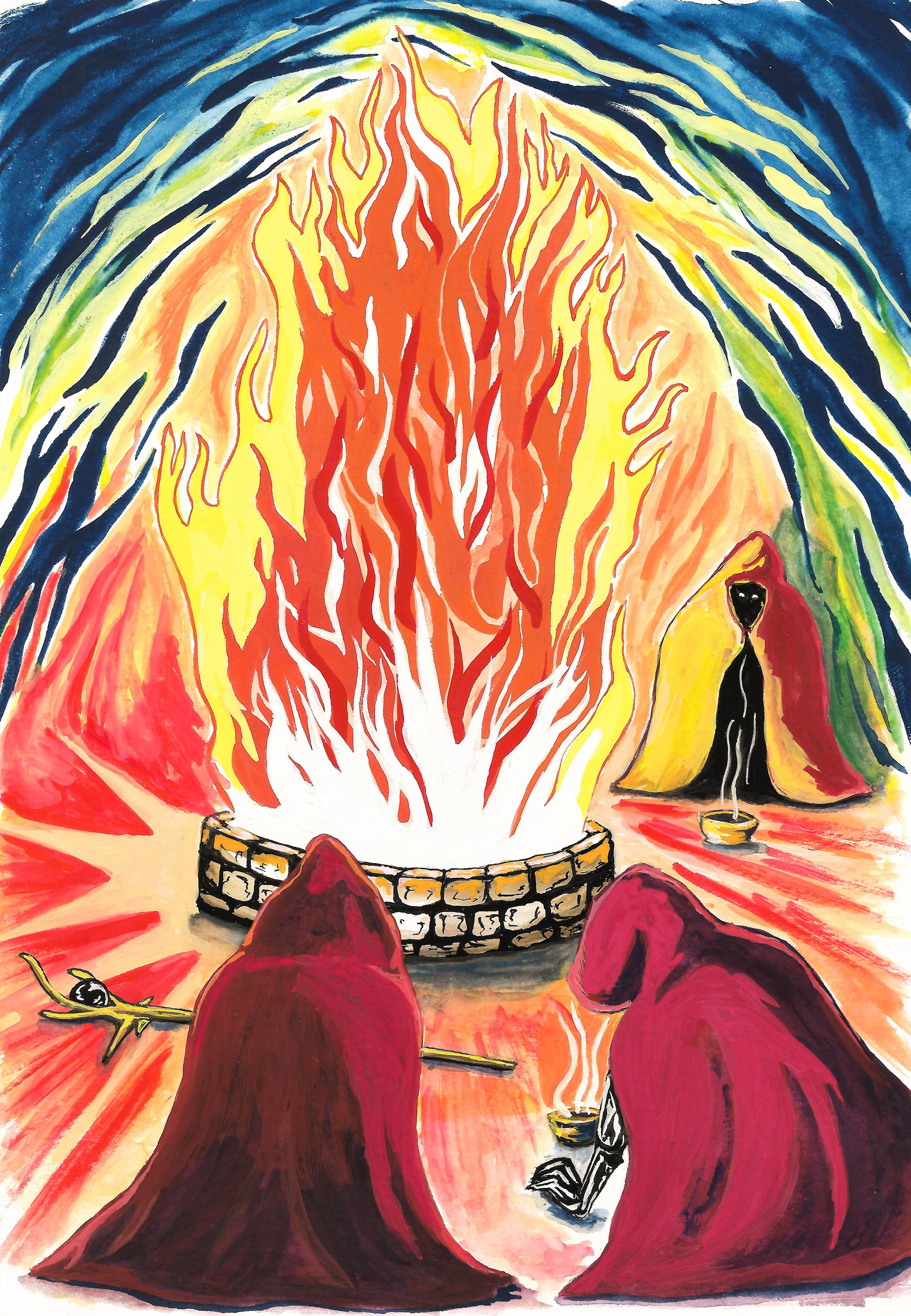
The year 2000 would prove to be pivotal in the history of role-playing games. Having purchased the haplessly managed TSR three years before, Wizards of the Coast would begin the new millennium by announcing the first new edition of Dungeons & Dragons for over a decade. Whilst Wizards' actions that year, including retiring the TSR brand, were firmly focused on building a new future for the game, another decision they made would inadvertently open a door to the past.
For along with the new, third, edition of Dungeons & Dragons, Wizards would also publish the first Systems Reference Document (SRD) and accompanying Open Game License (OGL). Containing the d20 system, derived from the new D&D’s rules, the SRD and OGL were designed to allow third party publishers to officially create, and then sell, their own supplements for the game.
This fateful decision would lead to the, as it happened doomed, d20 boom of the early 2000s as a whole host of new publishers sprung up to make their names releasing both 3rd edition modules and, unexpectedly in the case of titles like Mutants & Masterminds and Broncosaurus Rex, entirely new d20 based games.
Wizards’ goal with the OGL had been to allow a vast ecosystem of content to develop around rather than in competition to the new system. More modules and more content, equals more people buying the core Dungeons & Dragons books went the theory. In principle it was a sound one.
But, in the dark troglodytic corners of the internet other, stranger, ideas were fermenting.
Knowing gamers, it’s probably a fair bet that when Gygax and Arneson cracked open their first dragon filled dungeon, at least one amongst their group stomped off, loudly declaring that Chainmail was clearly the far superior game
Sometimes this is just rose tinted nostalgia. As the years, and all that entails, begin to pile up it’s natural to hold up the trappings of youth - whether that be bands, Garbage Pail Kids or indeed role-playing games - as the pinnacle of culture after which, to quote Picasso, ‘all is decadence’.
But it’s also true that games at least have a tendency to accrue baggage over their lifetimes, or for new editions to arrive with unwanted or unasked for changes that give earlier editions a purity of vision and play-style that ‘fussier’ or, as their designers might say, more ‘advanced’ editions lack. One man’s mimic is, after all, another’s treasure chest.
And so on forums and at conventions a protean thought began to be spoken out loud. If the OGL could be used to create material for the current iteration of D&D then, just maybe, it could also allow for older editions to re-emerge blinking into the light from their stygian tombs once more.
And so by 2001 we were already seeing the first stirrings of what would become the Old School Renaissance, or Old School Revival, or even Old School Rules (let’s just call it the OSR...), movement.
At first this materialised in the shape of publishers, such as Necromancer Games (later Frog God Games), releasing both new 3rd edition modules that were designed to emulate the feel of older editions - especially that of the 1st edition of Advanced Dungeons & Dragons - or even licensing, revising and reissuing modules dug up from the 1980s.
Over the next few years though people’s ambitions would go from simply updating old modules to actually recreating those old editions wholesale, or at least as closely as they could. In his book on the history of role-playing games, Designer’s & Dragons, Shannon Appelcline cites 2004’s Castles & Crusades as the first of these revenant RPGs, an attempt by Troll Lord Games “to recreate the general feel of a very specific game: the original D&D“.
That simulation of ‘feel’ would soon become full on necromancy as Castles & Crusades gave way to the attack of the retroclones, games that attempted to perfectly replicate their dusty forbears. 1st edition AD&D in the case of 2006’s OSRIC, Basic D&D in 2007 with Labyrinth Lord and the original 1974 D&D with 2008’s Sword & Wizardry.
The release of these three titles would open the floodgates to a seemingly endless number of other games based upon both dormant D&D editions and all manner of other RPGs dredged up from the water damaged basement of role-playing game history.

Whatever the game, what was emerging was a defined Old School Style of role-playing. A style that Gavin Norman, creator of Old School Essentials, defines as ‘A reliance on the referee to make judgements and rulings, rather than attempting to codify rules to cover all eventualities,’ and ‘a focus on exploration and imagination, as opposed to combat and character builds.’
That mantra of ‘rules not rulings’ is probably key to this style of play and one of that David Perry put first and foremost in his booklet, Principia Apocrypha (probably the best guide to the Old School Style of roleplaying that you can go off and download right now for free).
The idea behind it is simple really, with fairly rudimentary systems with limited, or nonexistent, character skills you will, sooner rather than later, run into situations not covered by the often scant rules. Old School Style embraces this as a feature not a bug and Perry advises letting ‘players take advantage of this openness and try crazy things’, before the referee makes ‘a common sense ruling’ and moves on.
As for the Old School Style’s lack of focus on combat, this can surprise people who assume the high lethality of these games - and that most the rules that do exist revolve around damaging things - makes getting into fights the point.
Rather - in theory at least - when a players’ fragile character can be quickly reduced to a bucket of chum, they will learn to avoid fights, using their wits to negotiate the perils of the underworld instead of tanking their way through everything thrown at them.
As for the enduring appeal of this style of play Norman puts it down to the ‘focus on imagination and open rules’ and how ‘those two things combined, encourage and enable a great deal of creativity. Both in terms of players devising crafty plans during the game and,’ he adds, ‘in terms of the explosion of creative content (new classes, spells, monsters, adventures, etc.) in the old-school scene.’

With Old School Essentials Norman’s focus has been on creating the best version possible of the B/X rules. ‘For me, B/X hits a sweet spot between simplicity and complexity,’ he says, the system ‘providing solid (yet not fiddly) rules for most common situations, while leaving a lot of room for referee judgement and customisation.’
Old School Essentials is today the gold standard of retroclones, with Norman’s focus not on mechanical innovation but refining the layout and text to create the most user-friendly set of books possible.
‘At the very dawn of the project, I did toy with the idea of tweaking elements of the rules,’ he explains, ‘but I soon abandoned that as the project took on more of an archaeological bent, digging through the old rules and reformulating them in a more modern presentation.’
‘In retrospect, I feel this decision was pivotal in the success of OSE,’ he adds. ‘The pure B/X rules are by no means perfect, if such a thing as a "perfect RPG rules set" exists... doubtful! But they form a kind of lingua franca in the old-school scene, forming a perfect base for people to build on top of.’
With those foundations now firmly established Norman has himself been busy building on top of them, the new Old School Essentials Advanced Fantasy books porting much 1st Edition AD&D material over to OSE’s B/X compatible system.
Whilst Norman was concerned with tidying up and reformatting the text for usability, for other’s the simplicity and flexibility of B/X has made it a perfect tabula rasa from which to start their own games from.
There lies one of the strange paradoxes of the OSR, as much as it has been driven by a desire to preserve certain games in amber - unfortunately in some cases along attitudes best left in the past too - it has also been a wellspring of experimentation and creativity.
Today the curious role-player can hit the dungeon running with any number of games that take the chassis of B/X, or AD&D or OD&D, and tweaks them in myriad ways, bringing in both elements from other editions deemed worthy or wholly novel ideas.
If you like the sound of Old School Style role-playing but prefer your games without classes, or with extra classes, or fancy equipment and inventory rules, with three instead of six stats, with skills lists or modified in numerous other ways it’s a fair bet you’ll find something to your taste lurking within the servers of DriveThruRPG or Itch.io.
Black Hacks, Whitehacks, Pinkhacks, there even exist OSR games that incorporate ideas and mechanics from the scene’s great indie rival of the 21st century, story games. A scenario that would astound some veterans from the days when old school and story gamers stood on opposite sides, scowling at each other like finger clicking gang members from some am-dram West Side Story revival.
Furthermore thanks to the indie scene’s culture of hacking and the ceaseless cross-pollination, new mutations are constantly appearing, being hacked themselves or combined with each games - like some kind of out of control RPG Voltron - to produce a seemingly endless stream of new ‘rules lite’ and OSR adjacent RPGs to play.
Games like Chris McDowall’s Into The Odd, Zachary Cox’s Best Left Buried, Yochai Gal’s Cairn or John Harper’s World of Dungeons may bear little, if anything, in common mechanically with their ancestors but all have something recognisably Old School about them, even as they look to the future.
And that perhaps is the real success story of B/X’s strange 21st century existence. Even more than how games like Old School Essentials have lovingly kept it alive and at our tables, this little game engine that could - released some 40 years ago as a stopgap for younger players put off by its Advanced cousin’s complexity - has become one of the most influential games today.
Acknowledged or not, the intertwined red and blue helix of B/X’s DNA lies buried deep in the core of so many of today’s best new indie games.
So happy birthday B/X, here’s to the next 40 years!
Old School Essentials is available now from Necrotic Gnome
This feature originally appeared in Wyrd Science Volume 1, Issue 2 (Sept '21)

